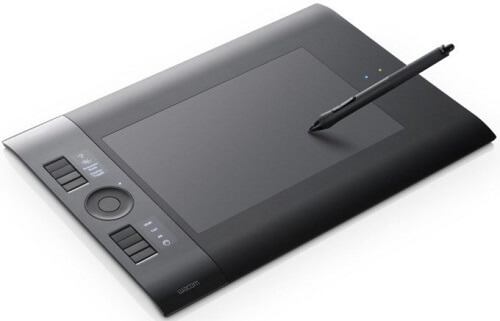What is a Graphics Tablet?A graphics tablet also referred to as a digitizer, digital graphic tablet, pen tablet, drawing tablet, external drawing pad, or digital art board, is a computer input tool that enables users to manually draw images, animations, and graphics using a special pen-like stylus. It is much like how someone would draw with a pencil and paper. Data entry or handwritten signatures may also be captured using these tablets. It can also be utilized to copy an image from paper that has been taped or otherwise fixed to the tablet's surface. Digitizing is the process of capturing data in this manner, which involves tracing or inputting the corners of linear polylines or geometric objects. 
The gadget has a rough surface on which the user can "draw" or trace an image using the stylus, a pen-like drawing tool that is attached. The image is displayed on the computer monitor, while some graphic tablets now feature an LCD screen for a more natural or realistic experience. For some desktop computers, tablets are meant to take the place of the mouse as the main pointing and navigational tool. HistoryElisha Gray's Telautograph, which was first made electronically, was patented in 1888. The Styler, a graphic tablet used for computerized handwriting identification, was the first one to resemble modern tablets. The Grafton (for Graphic Converter), which was initially introduced in 1964, is more popularly recognized (and frequently erroneously referred to as the first digitizer tablet) than the RAND Tablet. A grid of wires underneath the tablet's surface was used by the RAND Tablet to encrypt vertical and horizontal coordinates in a tiny electrostatic signal. Capacitive coupling allowed the stylus to pick up the signal, which could subsequently be decoded back into coordinate information. The spark tablet, sometimes known as an acoustic tablet, made sounds by using a spark plug as a pen. The pen's location in space was then determined by triangulating the clicks using a number of microphones. The sensors were vulnerable to interference from outside noise, and the system was both expensive and somewhat sophisticated. What are the characteristics of graphics tablets?Tablets are typically distinguished by their size, drawing area, resolution size («active area», measured in LPI), pressure sensitivity (level of varying stroke size with pressure), number of buttons, and types and number of interfaces: Bluetooth, USB, etc. The actual drawing accuracy is limited to the pen's nib size. What are the uses of graphics tablets?
Next TopicWhat is CD ROM
|
 For Videos Join Our Youtube Channel: Join Now
For Videos Join Our Youtube Channel: Join Now
Feedback
- Send your Feedback to [email protected]
Help Others, Please Share










